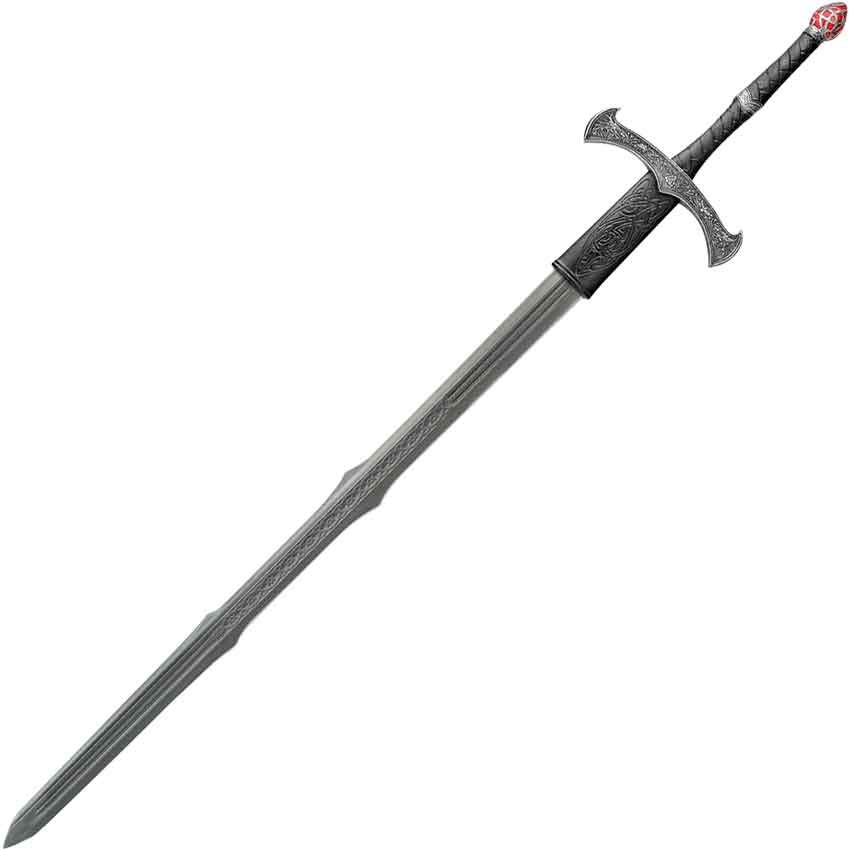The Next 6 Things You Should Do For Metal Viking Swords Success
페이지 정보

본문
Introduction:
Metal Viking swords hold a prominent place in history as fearsome weapons of the Norse seafarers. Known for their exceptional craftsmanship, these swords played a crucial role in Viking warfare and are revered as symbols of Viking culture and prowess. This report delves into the intricate details of metal Viking swords, their evolution over time, construction techniques, and their significance in warfare during the Viking Age.
Evolution and Construction:
- These swords featured a straight, double-edged blade with a fuller (or a blood groove) to reduce the weight while maintaining strength.
- The hilt was usually made of wood, wrapped in leather, and adorned with intricate metal fittings.

- The Ulfberht swords, named after the inscription on the blade, were considered technologically superior due to their high-quality steel.
- Other Viking swords featured patterns of twisted steel, known as pattern-welding, which enhanced their strength and visual appeal.
- Hilts became more ornate, with bronze, silver, and even gold decorations. The pommel shape and crossguard design also exhibited regional variations.
- Multiple layers of iron or steel were twisted together, then hammered and folded numerous times to create intricate patterns.
- The final blades were often hardened through a process called "quenching" to enhance their durability and sharpness.
- Some Viking swords utilized a single piece of high-carbon steel, showcasing advancements in blacksmithing techniques.
Significance in Viking Warfare:
- They were efficient weapons for close combat, offering a balance between slashing and thrusting capabilities.
- Vikings often fought in shield walls, where the sword's relatively short length allowed for maneuverability in tight spaces.
- The sword's artistry, materials used, and inscriptions displayed the wealth and metal Viking swords social standing of its owner.
- Swords were sometimes offered as votive offerings to deities, further highlighting their cultural and spiritual significance.
- Ancient Norse legends attributed supernatural properties to certain swords, believing they could aid the warriors in battle or bring luck.
- Swords occasionally bore runic inscriptions, invoking protective charms or marking the blade with the warrior's name.
Conclusion:
Metal Viking swords serve as remarkable artifacts that provide insights into the history, craftsmanship, and warfare practices of the Viking Age. These weapons, as symbols of strength and status, embody the martial spirit and rich mythology surrounding the Norse warriors. The legacy of metal Viking swords endures as a testament to the indomitable spirit of the Viking civilization and their incomparable contribution to the annals of history.
Metal Viking swords hold a prominent place in history as fearsome weapons of the Norse seafarers. Known for their exceptional craftsmanship, these swords played a crucial role in Viking warfare and are revered as symbols of Viking culture and prowess. This report delves into the intricate details of metal Viking swords, their evolution over time, construction techniques, and their significance in warfare during the Viking Age.
Evolution and Construction:
- Early Viking Age Swords:
- These swords featured a straight, double-edged blade with a fuller (or a blood groove) to reduce the weight while maintaining strength.
- The hilt was usually made of wood, wrapped in leather, and adorned with intricate metal fittings.

- Viking Sword Design:
- The Ulfberht swords, named after the inscription on the blade, were considered technologically superior due to their high-quality steel.
- Other Viking swords featured patterns of twisted steel, known as pattern-welding, which enhanced their strength and visual appeal.
- Hilts became more ornate, with bronze, silver, and even gold decorations. The pommel shape and crossguard design also exhibited regional variations.
- Sword Construction Techniques:
- Multiple layers of iron or steel were twisted together, then hammered and folded numerous times to create intricate patterns.
- The final blades were often hardened through a process called "quenching" to enhance their durability and sharpness.
- Some Viking swords utilized a single piece of high-carbon steel, showcasing advancements in blacksmithing techniques.
Significance in Viking Warfare:
- Portable and Versatile Weapons:
- They were efficient weapons for close combat, offering a balance between slashing and thrusting capabilities.
- Vikings often fought in shield walls, where the sword's relatively short length allowed for maneuverability in tight spaces.
- Symbol of Status and Power:
- The sword's artistry, materials used, and inscriptions displayed the wealth and metal Viking swords social standing of its owner.
- Swords were sometimes offered as votive offerings to deities, further highlighting their cultural and spiritual significance.
- Magic and Mythology:
- Ancient Norse legends attributed supernatural properties to certain swords, believing they could aid the warriors in battle or bring luck.
- Swords occasionally bore runic inscriptions, invoking protective charms or marking the blade with the warrior's name.
Conclusion:
Metal Viking swords serve as remarkable artifacts that provide insights into the history, craftsmanship, and warfare practices of the Viking Age. These weapons, as symbols of strength and status, embody the martial spirit and rich mythology surrounding the Norse warriors. The legacy of metal Viking swords endures as a testament to the indomitable spirit of the Viking civilization and their incomparable contribution to the annals of history.
- 이전글In Which Location To Research ADHD Tests Online 24.10.23
- 다음글39 Finest Cam Websites Of 2022 Adult Cam Woman Shows Online 24.10.23
댓글목록
등록된 댓글이 없습니다.
